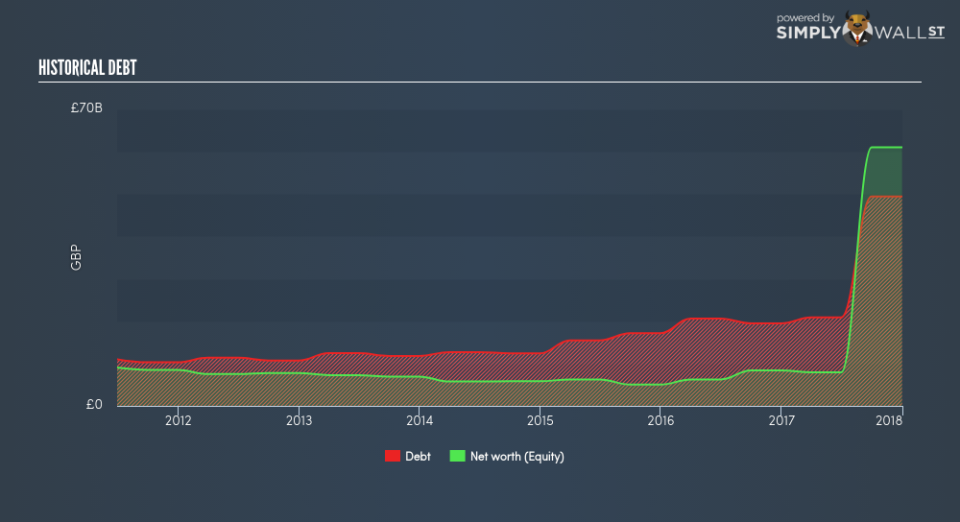British American Tobacco plc (LON:BATS): Time For A Financial Health Check

Investors pursuing a solid, dependable stock investment can often be led to British American Tobacco plc (LON:BATS), a large-cap worth UK£84.48b. Big corporations are much sought after by risk-averse investors who find diversified revenue streams and strong capital returns attractive. However, the health of the financials determines whether the company continues to succeed. This article will examine British American Tobacco’s financial liquidity and debt levels to get an idea of whether the company can deal with cyclical downturns and maintain funds to accommodate strategic spending for future growth. Note that this information is centred entirely on financial health and is a high-level overview, so I encourage you to look further into BATS here. Check out our latest analysis for British American Tobacco
How much cash does BATS generate through its operations?
BATS’s debt levels surged from UK£19.50b to UK£49.45b over the last 12 months – this includes both the current and long-term debt. With this growth in debt, BATS currently has UK£3.36b remaining in cash and short-term investments , ready to deploy into the business. On top of this, BATS has generated UK£5.35b in operating cash flow over the same time period, resulting in an operating cash to total debt ratio of 10.81%, signalling that BATS’s operating cash is not sufficient to cover its debt. This ratio can also be interpreted as a measure of efficiency as an alternative to return on assets. In BATS’s case, it is able to generate 0.11x cash from its debt capital.
Can BATS meet its short-term obligations with the cash in hand?
With current liabilities at UK£15.54b, it appears that the company has not maintained a sufficient level of current assets to meet its obligations, with the current ratio last standing at 0.9x, which is below the prudent industry ratio of 3x.
Can BATS service its debt comfortably?
With debt reaching 81.03% of equity, BATS may be thought of as relatively highly levered. This isn’t surprising for large-caps, as equity can often be more expensive to issue than debt, plus interest payments are tax deductible. Since large-caps are seen as safer than their smaller constituents, they tend to enjoy lower cost of capital. By measuring how many times BATS’s earnings can cover interest payments, we can evaluate whether its level of debt is sustainable or not. Ideally, earnings before interest and tax (EBIT) should cover net interest by at least three times. For BATS, the ratio of 7.04x suggests that interest is appropriately covered. Strong interest coverage is seen as a responsible and safe practice, which highlights why most investors believe large-caps such as BATS is a safe investment.
Next Steps:
With a high level of debt on its balance sheet, BATS could still be in a financially strong position if its cash flow also stacked up. However, this isn’t the case, and there’s room for BATS to increase its operational efficiency. In addition to this, its lack of liquidity raises questions over current asset management practices for the large-cap. Keep in mind I haven’t considered other factors such as how BATS has been performing in the past. I recommend you continue to research British American Tobacco to get a better picture of the stock by looking at:
Future Outlook: What are well-informed industry analysts predicting for BATS’s future growth? Take a look at our free research report of analyst consensus for BATS’s outlook.
Valuation: What is BATS worth today? Is the stock undervalued, even when its growth outlook is factored into its intrinsic value? The intrinsic value infographic in our free research report helps visualize whether BATS is currently mispriced by the market.
Other High-Performing Stocks: Are there other stocks that provide better prospects with proven track records? Explore our free list of these great stocks here.
To help readers see pass the short term volatility of the financial market, we aim to bring you a long-term focused research analysis purely driven by fundamental data. Note that our analysis does not factor in the latest price sensitive company announcements.
The author is an independent contributor and at the time of publication had no position in the stocks mentioned.

 Yahoo Finance
Yahoo Finance 
